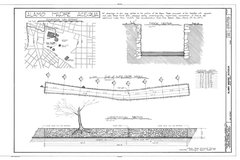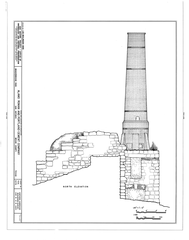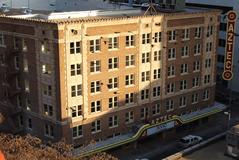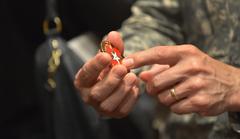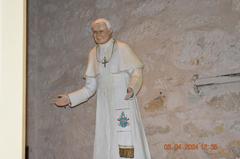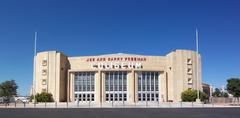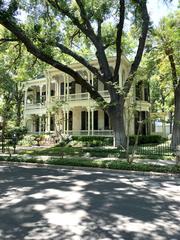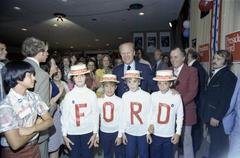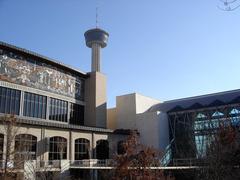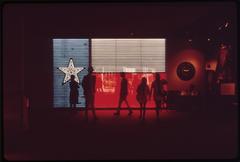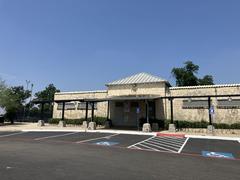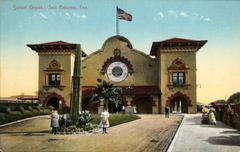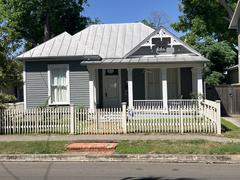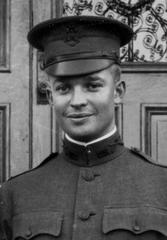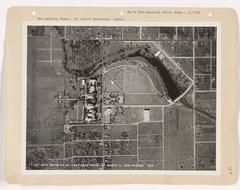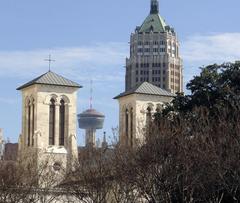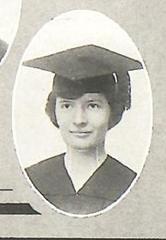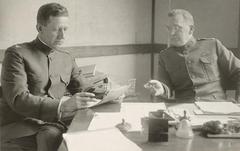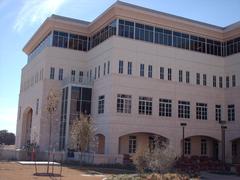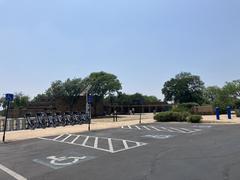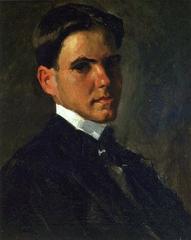Yturri-Edmunds House: Visiting Hours, Tickets, and San Antonio Historical Sites Guide
Date: 04/07/2025
Introduction
Nestled along the scenic San Antonio River, the Yturri-Edmunds House is a rare and evocative treasure that transports visitors to 19th-century Texas. Built in the 1840s by Manuel Yturri y Castillo—a prominent Tejano businessman—the house stands as a testament to San Antonio’s multicultural heritage and architectural traditions. With its thick adobe walls, hand-hewn beams, and authentic period furnishings, the house exemplifies Spanish Colonial influences and early rural Texan life. Its integration with historic water systems, including the Pajalache acequia and an adjacent grist mill powered by the river, highlights the ingenuity of early settlers in sustaining their agricultural community.
Visitors can explore not only the architectural and cultural legacy of the Yturri and Edmunds families but also participate in living history demonstrations and educational programs. This guide provides essential information on visiting hours, ticketing, accessibility, special events, and nearby attractions, ensuring a rewarding experience at this unique San Antonio historical site.
For further details, consult the San Antonio Conservation Society or the Handbook of Texas Online.
Table of Contents
- About the Yturri-Edmunds House
- Practical Visitor Information
- Guided Tours, Events, and Educational Programs
- Nearby Attractions
- Frequently Asked Questions (FAQ)
- Plan Your Visit
- References & Further Reading
About the Yturri-Edmunds House
History and Architecture
Constructed in the 1840s by Manuel Yturri y Castillo, the Yturri-Edmunds House is among the few remaining adobe-block houses in San Antonio. Adobe—a sun-dried earthen material—was widely used for its durability and insulation, especially in the “city of adobes” (San Antonio Conservation Society). The house features a single-story, triple-pen layout typical of Spanish Colonial farmsteads, with each room opening directly to the exterior. A full-length porch, wooden posts, and a standing-seam metal roof further reflect the blend of Spanish and early Texan influences (SAH Archipedia).
Cultural Significance
The property is intimately tied to San Antonio’s early history. Yturri y Castillo, a Spaniard who immigrated to Mexico, obtained the land from Mission Concepción in the early 1820s. His marriage to Maria Josefa Rodriguez, a descendant of the original Canary Islander settlers, links the home to two of San Antonio’s foundational communities (Wikipedia). Remaining in the family for over a century, the house and its contents were eventually donated to the San Antonio Conservation Society by Ernestine Edmunds, preserving both the building and its rich legacy (San Antonio Report).
The site is also notable for its integration with the historic Pajalache acequia and its reconstructed grist mill, underscoring the agricultural and industrial life of early San Antonio (Texas Highways).
Restoration and Preservation
After acquiring the property in 1961, the San Antonio Conservation Society undertook major restoration beginning in 1964. Led by engineer Ernst Schuchard and architect Marvin Eickenroht, these efforts included the house and mill. The property is listed on the National Register of Historic Places and designated as a Recorded Texas Historic Landmark (Wikipedia). Ongoing preservation is supported by grants and community donations.
Practical Visitor Information
Location and Access
Address: 128 Mission Road, San Antonio, Texas
Located just south of downtown, the Yturri-Edmunds House sits near the historic Mission Trail and is accessible by car or public transit. Ample street parking is available, and VIA Metropolitan Transit bus routes serve the area (Wanderlog).
Visiting Hours and Tickets
- Tours: By appointment only (walk-ins are not permitted)
- Tour Duration: 45 minutes to 1 hour
- Booking: Reserve at least two weeks in advance via the San Antonio Conservation Society
- Admission Fees: Confirm at the time of booking; group rates may be available
- Discounts: Available for students, seniors, and military personnel upon inquiry
Accessibility
Due to its historic nature, accessibility may be limited. The main house has a ramp, and pathways are generally level, but some interior spaces are narrow. Uneven surfaces and steps, especially near the mill and outbuildings, may present challenges. Visitors with mobility needs should contact the site ahead of time to discuss accommodations.
Site Facilities and Visitor Tips
- Restrooms: Limited or unavailable; plan accordingly
- Parking: Street parking nearby
- Amenities: No café or gift shop; guests may bring food for picnics
- Photography: Non-flash photography permitted outdoors; indoor photography may be restricted
- Weather: Summers are hot and humid—bring water and sun protection
- Attire: Wear comfortable shoes for uneven ground
Guided Tours, Events, and Educational Programs
All visits are guided by knowledgeable docents who share insights into the house’s architecture, its families, and San Antonio history. The tour includes:
- Main House: Explore period-furnished rooms and original artifacts
- Grist Mill: See the restored mill, sometimes demonstrated during special events
- Grounds: Enjoy gardens and outbuildings reflective of 19th-century life
Special Events:
The Yturri-Edmunds House hosts living history demonstrations, cultural heritage days, and educational workshops throughout the year. School groups can arrange hands-on activities aligned with Texas history curricula. Check the San Antonio Conservation Society website for the latest schedules.
Nearby Attractions
Enhance your visit by exploring other significant sites in the area:
- San Antonio Missions National Historical Park: A UNESCO World Heritage Site with four Spanish colonial missions
- King William Historic District: Noted for its 19th-century homes and vibrant local scene
- San Antonio River Walk: Dining, shopping, and scenic strolls along the river
Frequently Asked Questions (FAQ)
Q: How do I book a tour at the Yturri-Edmunds House?
A: All tours are by appointment. Reserve through the San Antonio Conservation Society or via phone.
Q: Are ticket prices listed online?
A: Admission fees are confirmed at booking and may vary by group size and type of tour.
Q: Is the site wheelchair accessible?
A: Some accessibility is provided, but not all areas are fully accessible. Contact the site in advance for accommodation details.
Q: Can I take photos inside the house?
A: Outdoor photography is allowed; ask your guide about indoor photography.
Q: Are there restrooms or picnic facilities?
A: Restrooms are limited; you may bring picnic food, but no on-site café is available.
Plan Your Visit
The Yturri-Edmunds House offers an immersive window into San Antonio’s past, with guided tours, educational programming, and special events. Plan ahead—book your tour early, prepare for the Texas climate, and combine your visit with nearby historical attractions for a full day of discovery.
For up-to-date information, visiting hours, and ticketing, visit the San Antonio Conservation Society website.
For maps and travel planning, consult the San Antonio Visitors Guide and download the Audiala app for insider tips and guided audio tours.
References & Further Reading
- Handbook of Texas Online: Manuel Yturri y Castillo
- San Antonio Conservation Society
- San Antonio Report: Preserving the History of Yturri-Edmunds House
- SAH Archipedia: Yturri-Edmunds House
- Texas Highways: Explore Frontier Life in San Antonio at the Yturri-Edmunds Home
- WhichMuseum: Yturri-Edmunds Historic Site San Antonio
- Wikipedia: Yturri–Edmunds Historic Site
- Wanderlog: Yturri-Edmunds House Museum
Ready to explore? Download the Audiala app for tickets, maps, and up-to-date tips on San Antonio historical sites, including the Yturri-Edmunds House. For more on local heritage, see our guides to San Antonio Missions National Historical Park and the King William Historic District.

